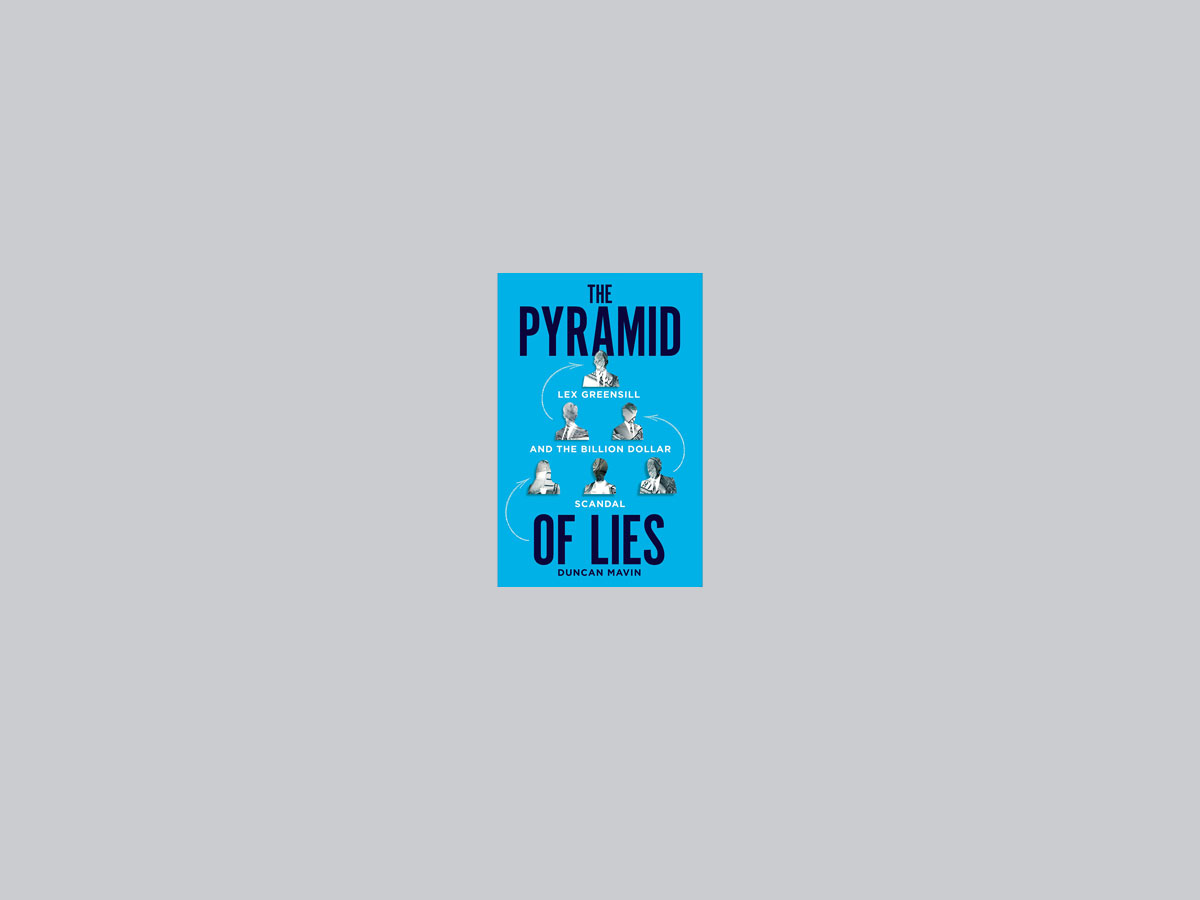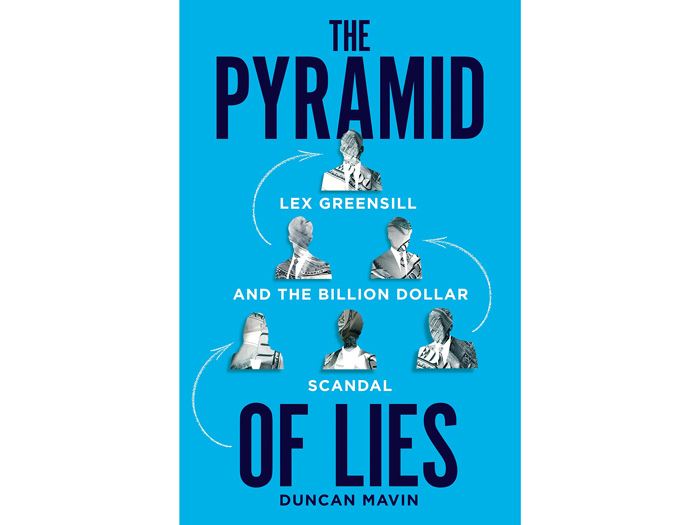
How an intrepid former accountant uncovered a huge financial scandal
 Duncan Mavin had to stand up to considerable intimidation in tracking the story of Lex Greensill and his company, Greensill Capital (Photo provided)
Duncan Mavin had to stand up to considerable intimidation in tracking the story of Lex Greensill and his company, Greensill Capital (Photo provided)
Investigative journalism, especially when it involves a story that has to unravel complicated financial transactions, requires a special tenacity and ability to track, understand, and report on myriad complex details. And Duncan Mavin, a contributing columnist with the Washington Post based in Durham, U.K., made ample use of these skills in uncovering a massive financial scandal in the U.K. Mavin, a former U.K. chartered accountant who spent some of his early career working in Canada, documented his journey in The Pyramid of Lies: Lex Greensill and the Billion Dollar Scandal, which was recently published by Pan Macmillan.
Mavin’s book tracks the meteroric rise and spectacular fall of Lex Greensill, an Australian banker who built a company based on the notion of supply chain financing—a model meant to bridge the gap between suppliers who want to get paid as soon as possible and buyers who want to hold off as long as they can. The idea was that his company, Greensill Capital, would act as a third party to provide loans to suppliers at a discount, then collect the full amount from buyers later on.
However, Greensill ended up engaging in a number of dubious practices: it made questionable investments, including loans to companies with no capacity to repay; it engaged in non-arm’s-length transactions to intertwined entities; and it sold repackaged loans to investors, misrepresenting them as low risk. The company also failed to gain access to a large insurer or a large audit firm, and there was no clear single-country regulator to supervise its transactions.
Ultimately, the company collapsed under the weight of these and other factors, causing huge international repercussions and billions of dollars in losses.
Mavin recently met with CPA Canada to discuss his book and the extensive investigative work undertaken to write it.
CPA CANADA: As an investigative journalist, what elements of the Greensill Capital financial scandal intrigued you to follow and write about this story for several years?
DUNCAN MAVIN (DM): A scandal had arisen at an asset management firm called GAM because of some dubious investments and it had been forced to close down a multi-billion-dollar fund as a result. And through a source I found out that all of the investments related to Greensill Capital.
As soon as I started to look at Greensill and its founder, Lex Greensill, I felt there was something deeply wrong. There was something odd about his personality and there was a very divided opinion on him. There were huge fans, but other people were saying things like ‘Steer clear of this guy. He’s a disaster waiting to happen.’ That intrigued me as a journalist.
So I just started digging and writing, and more came of it.
 A U.K. chartered accountant, Duncan Mavin worked in Canada before becoming a journalist with the Washington Post (Photo provided)
A U.K. chartered accountant, Duncan Mavin worked in Canada before becoming a journalist with the Washington Post (Photo provided)
CPA CANADA: What are the challenges that you faced in uncovering a massive financial scandal like this, with so many individuals and companies involved?
DM: A scheme like this, which involves a multitude of intertwined corporate entities and offshore vehicles, is complex by design, because that makes it harder to unravel. It’s not transparent at all. It’s meant to deter any kind of scrutiny.
Also, once a business becomes big enough, it can afford the most expensive lawyers and public relations representatives, who will attack you as a journalist. And they did that to me. They sent messages to my boss and other people around me saying I was unprofessional, sloppy, and that I had an agenda. It’s especially galling that there was no blowback to these people when it turned out they were wrong.
It’s really tough as a journalist to stand up to that level of intimidation.
In this case, it went to fairly extreme levels. I’m almost certain they broke into my car and had me followed, tried to hack my laptop and phone. And I worried about that, for sure.
CPA CANADA: Why do you think Lex Greensill managed to fool so many people in high places, in both finance and government? Did you get any sense of that in your personal conversations with him?
DM: Lex Greensill believes in himself very deeply, and that is compelling for some people.
On top of that he was offering enormous amounts of money to potential employees, investors in Greensill Capital, board members and other partners. Even among people who didn’t fully buy in to Greensill’s bluster, some figured that if he came through on a fraction of what he was promising, they could still get rich.
I didn’t buy it at all. He never seemed genuine. He always seemed like a guy who was trying too hard to figure out how to make me fall under his spell. As a journalist that definitely made me suspicious.
CPA CANADA: Your book outlines how Greensill Capital conducted some transactions that even on the surface seemed to lack a solid foundation. For example, there was limited insurance coverage for many of its supply chain financing transactions.
DM: You point to a really important piece of the story, because I think ultimately that’s the trigger for why Greensill collapsed. Some of the supply chain finance loans were covered by trade credit insurance to get a better credit rating and to make them investible.
But problems with many of Greensill’s supply chain finance loans over the years had strained his relationships with many of the big insurers. So he became very reliant on one small Australian insurer, The Bond & Credit Co., that ended up underwriting billions of dollars in insurance for Greensill.
When ownership of The Bond & Credit Co. changed hands to a big Japanese insurer, they took a look at the Greensill business, decided they didn’t like it, and pulled the insurance. Sure enough, the Greensill funds collapsed.
CPA CANADA: What other red flags were missed? Who should be catching them when financial scandals of this magnitude occur?
DM: There were many.
For starters, although Greensill had become a big multinational business with staff around the world and was dealing with billions of dollars in loans, it couldn’t get a big international auditor on board.
Also, the funds at Credit Suisse that invested in Greensill’s supply chain finance loans disclosed a lot of information. So it wasn’t hard to dig into the borrowers--and find that hundreds of millions of dollars were being lent to companies that were pretty much related parties to Greensill or to senior Greensill executives, or the money was going to companies with no income and no capacity to pay back the loans. Anyone could have spotted this with a little bit of research.
I think the regulators were particularly problematic. Greensill existed in a kind of regulatory grey area. The parent company was registered in Australia. The main operations were in the U.K. Their funds were mostly in Lichtenstein or Luxembourg, and managed by Credit Suisse, based in Switzerland. They owned a bank in Germany.
A lot of money got shuffled around and I think none of the regulators felt particularly responsible for Greensill.
CPA CANADA: There are supposed to be checks and balances to prevent this sort of scandal. How many have to be missed for a scandal of this magnitude to occur?
DM: If you have somebody like Greensill who is incredibly confident, promising billions of dollars to make everyone rich, people waive a lot of the checks and balances. Peoples’ skepticism lowers because they see the dollar signs.
Greensill was also able to build credibility by having major investors like the SoftBank Vision Fund on board and by hiring former U.K. Prime Minister David Cameron as a door opener to provide his company with direct contacts to government and business sources, and to boost its public relations profile. There were skeptics but no matter how much they rang the alarm bells, it was pretty hard to stop the momentum.
CPA CANADA: You mentioned in the book that reforms emanating from the 2008 financial crisis ironically created opportunities for institutions like Greensill Capital to operate in the shadows. Please elaborate on that point.
DM: Post-financial crisis regulations made it uneconomical for banks to run certain businesses. Supply chain finance was one of them. Instead of this activity being offered by highly regulated banks, it was being run by a start-up business that really wasn’t regulated anywhere.
Another important factor in the rise of Greensill is that the aftermath of the financial crisis saw a decade or so of low interest rates. Whenever that happens, there is a chance that investors will hunt more widely for a marginally better return, even if it comes with much more risk. Greensill Capital benefited from that. It was promising supposedly safe investments when in reality, many of the loans were very risky.
CPA CANADA: The Greensill Capital scandal contains a lot of very technical details and chronological narrative. Has your background as a chartered accountant helped you track all of those details?
DM: Yes. I was comfortable with numbers and able to pull up companies’ accounts and ask, ‘Where should that loan be?’ Or ‘Does that make any sense?’ And as an ex-accountant, I was comfortable dealing with complex companies and corporate structures.
I could also ask the right questions, and when the people involved knew that I knew what I was talking about, I was able to get better answers.
As a result, I was able to help uncover this enormous political and financial scandal.
MORE ON FINANCIAL CRIME
Check out CPA Canada’s extensive fraud protection and anti-money laundering resources and read up on recent scams targeting individuals and businesses. Plus, read about true fraud cases and the scammers behind them.